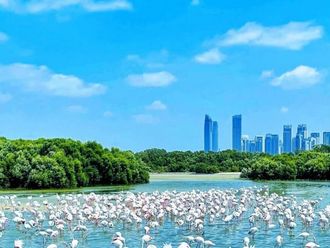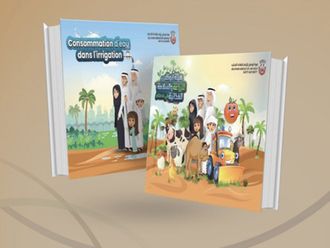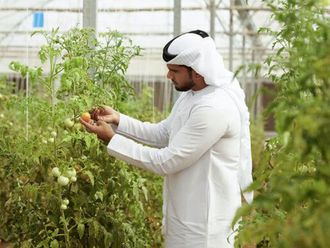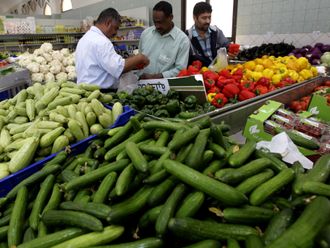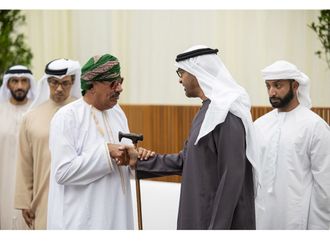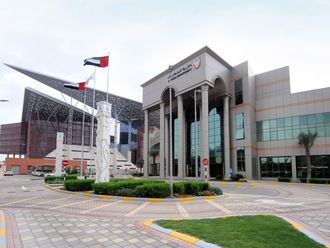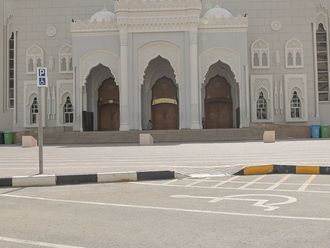
Dubai: Olive trees, the older and more gnarled the better, are making an entrance in UAE real estate developments seeking to embellish the manicured lawns of housing projects.
Having survived diseases, civil wars, witnessed the births of kings and the fall of presidents, these annals of history are now being uprooted and planted in modern residential developments to give urban neighbourhoods an established look.
The first of such trees brought to the UAE was for the Al Barari development off Emirates road last year to complete a ‘Mediterranean garden'.
Apparently thousands more olive seedlings from cuttings have been acclimatised to the UAE's weather conditions but it is unknown how the six ancient trees, believed to be more than 100-year-old, are doing as access to the garden was declared off-limits to Gulf News.
The Al Barari development was planted with more 10,000 plants, 250 palms and trees including the century-old olive trees most of which were imported from abroad. The green areas provide the backdrop for hundreds of villas that are yet to be completed.
Olive trees, asides from requiring the obligatory import permit, are allowed to be brought into the UAE.
According to Ancient Olive Trees, an olive grove selling old trees based in the US, even the oldest of trees can be successfully transplanted because of their unique root system. Transplanted olive trees require full irrigation for the first year, but can survive intense heat and extended dry periods.
Uprooted
According to olive tree traders in Europe and the US, typically trees should be uprooted in the spring after pruning. Workers cut the branches close to the trunk, then use a backhoe to cut the root system to within 50 centimetres of the trunk. Olives are dry-climate plants, meaning they absorb water efficiently, making it possible to transplant them with few roots left.
Poor farmers in southern parts of Europe who deem their 50-year-old olive tree worthless in terms of olive yield choose to sell them off in exchange for what might be the equivalent of their annual salary.
In terms of production capacity, an olive tree produces the most olives between 25 and 40 years.
According to the Wall Street Journal, between 2001 and 2005 in the Castellon region of Valencia, the local agriculture department recorded that 200 ancient trees were sold. There are still 1,200 trees from the Visigothic and Roman eras on record.
In Andalusia, the number of ancient trees is in the several thousands, according to estimates from government agencies and conservation groups.
Permits needed
Import permits for all plants and trees issued by the Ministry of Environment and Water must be obtained for all flora — indoor and outdoor — that are brought into the UAE.
Permits can be applied for at the Cargo Village or Flower Centre near Dubai airport and cost approximately Dh 500.
To limit the introduction of pests, plants must not contain any natural soil from their place of origin.
Should they arrive to the UAE potted in soil, a sample will be taken and tested by the ministry to preserve the bio-security of the country.
The ministry said that the import of natural soil can lead to the introduction of plant diseases and larvae, insects, worms, harmful nematodes, viruses and bacteria, which may not be discovered in conventional laboratory equipment and could lead to the detriment of natural vegetation.
The Plant Import Permit ensures that the Convention on International Trade in Endangered Species of Wild Fauna and Flora (CITES), which includes 2,800 plant species, is not violated. The permits also ensure that illegal plants such as cannabis, for example, do not enter the country. There is also a ban on coconut palms amongst others, especially from countries infected with Red Palm Weevil.
A witness to history
At the time of this tree's birth, the area now known as Lebanon was going through a transition form Christian Crusader rule to Muslim Ayyubid rule after Muslim warrior Salah Al Deen (in the image below) defeated the Kindgom of Jerusalem in 1179 at the Battle of Marjayoun in modern day Lebanon. The Kingdom of Jerusalem was a Christian Catholic Kingdom established in the Levant in 1099 after the First Crusade. It lasted until 1291, when the Ayyubid and then the Mamluk Muslim regimes defeated it.
In the late 13th Century, the area witnessed the restoration of Muslim rule under the Mamluks, followed by Ottoman rule in the 16th Century which lasted for centuries until the French mandate took over in the early 20th century, followed by independence in 1943, a bloody civil war from 1975 to 1990, continued foreign invasions and foreign control and an Israeli war in 2006.


